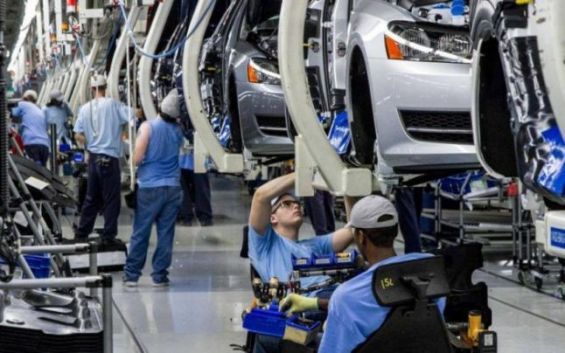Morocco has been ranked first in the Middle East and North Africa region in Fitch Solutions’ Autos Production Risk/Reward Index, the agency wrote on Wednesday.
Morocco tops the ranking thanks to its «robust outlook for production growth, low labor costs and positive industry policy», Fitch Solutions explained. It stressed, however, that there is still room for improvement, referring to the country’s «logistics network and labor force».
According to Fitch Solutions, Morocco’s overall Autos Production Risk/Reward Index (RRI) score was 46.7 out of a possible 100. This makes the country’s auto market an attractive one in the MENA region.
Production growth and manufacturing capability
While Morocco is ranked first regionally, it is 34th out of 56 globally, according to the same agency. The sub-indexes included by the Autos Production Risk/Reward Index show that the Kingdom’s auto industry performs best when it comes to vehicle production growth and volume, strength of industry and manufacturing capability.
Indeed, Morocco’s highest score is 83.9 out of 100 for its vehicle production growth. «It should also be noted that this growth is from a low base, given the small number of vehicle producers, but the potential has been enough to attract a large number of suppliers to invest», Fitch Solutions wrote.
The other reason that makes the country’s auto industry attractive is its low labor costs. Morocco scores 66.1 out of 100 in the average labor cost index. The country’s good score in the industry policy, 81.3 out of 100, is also one of its attracting points, as it reflects the government’s active support for the development of the industry.
Morocco’s lowest scores are related to its manufacturing capability, scoring 35.7 points. «We should expect this to improve over time as sectors such as autos manufacturing develop further», Fitch Solutions explained.
The agency stresses Morocco’s need to improve its logistics risk score. Scoring 32.1 out of 100, the index «measures the quality and reliability if the country’s logistics network». «Given that many companies choose Morocco for its geographical position between MENA and Europe and the trade opportunities that brings, this should be an area to focus on», Fitch Solutions warned.
Dealing with Covid-19 related losses
Despite its performance in the MENA region, Morocco still has to deal with the losses brought by the health crisis. A report released last week, the Policy Center for the New South studied Morocco’s automotive industry during the current health crisis. The center revealed that the «sector has not been immune to the current crisis».
The Policy Center’s findings show that the industry suffered a «40% decline in turnover over the first half of this year». «The strong dependence of the sector on imported inputs which would have reduced the sector's demand for intermediate goods», is one of the reasons behind said decline, the same source explained.
«During the first 3 months of the year, exports from the automotive sector fell by almost a quarter compared to the same period last year, even before the state of emergency and confinement were declared in the kingdom», the center pointed out.
«Over the months, the situation quickly worsened : At the end of May, the sluggishness of the automotive sector became more tangible and the drop in exports fell to almost 40%, more pronounced this time for intermediate products», it added.
As a result, in absolute value, the decline is equivalent to 13.9 billion dirhams over the 5 first months of the year, whereas «if the sector closes the 2020 financial year with the same poor performance, the shortfall for the automotive sector would cross 33 billion dirhams, or the equivalent of 3% of GDP», the study concludes.





 chargement...
chargement...













